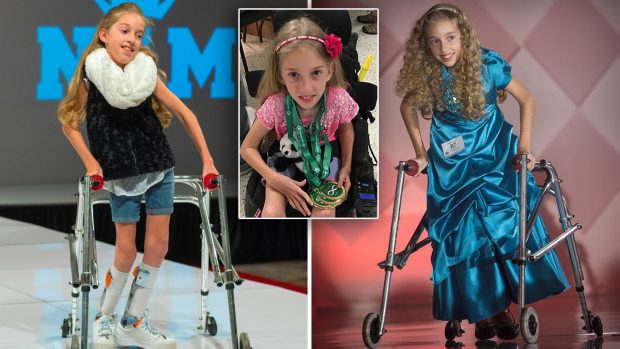
U.Post. Cerebral palsy is a group of problems that affect body movement and posture. It is related to a brain injury or to problems with brain development. It is one of the most common causes of lasting disability in children.
Cerebral palsy causes reflex movements that a person can’t control and muscle tightness that may affect parts or all of the body. These problems can range from mild to severe. Intellectual disability, seizures, and vision and hearing problems can occur.
Pathophysiology
Cerebral palsy (CP), defined as a group of nonprogressive disorders of movement and posture, is the most common cause of severe neurodisability in children. Understanding its physiopathology is crucial to developing some protective strategies. Interruption of oxygen

supply to the fetus or brain asphyxia was classically considered to be the main causal factor explaining later CP. However several ante-, peri-, and postnatal factors could be involved in the origins of CP syndromes. Congenital malformations are rarely identified. CP is most often the result of environmental factors, which might interact with genetic vulnerabilities, and could be severe enough to cause the destructive injuries visible with standard imaging (i.e., ultrasonographic study or MRI), predominantly in the white matter in preterm infants and in the gray matter and the brainstem nuclei in full-term newborns. Moreover they act on an immature brain and could alter the remarkable series of developmental events. Biochemical key factors originating in cell death or cell process loss, observed in hypoxic-ischemic as well as inflammatory conditions, are excessive production of proinflammatory cytokines, oxidative stress, maternal growth factor deprivation, extracellular matrix modifications, and excessive release of glutamate, triggering the excitotoxic cascade. Only two strategies have succeeded in decreasing CP in 2-year-old children: hypothermia in full-term newborns with moderate neonatal encephalopathy and administration of magnesium sulfate to mothers in preterm labor.
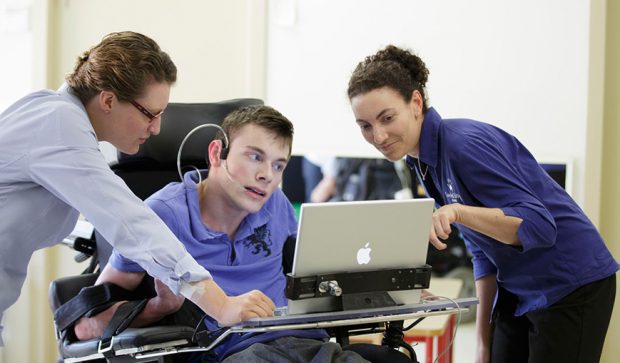
What causes cerebral palsy?
Cerebral palsy is caused by a brain injury or problem that occurs during pregnancy or birth or within the first 2 to 3 years of a child’s life. It can be caused by:
*Problems from being born too early (premature birth).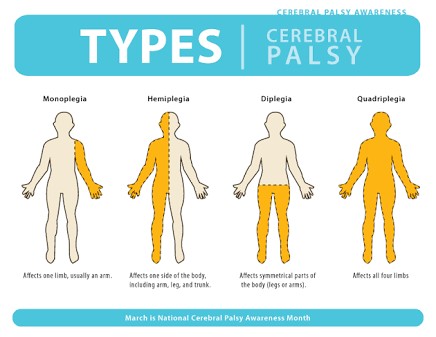
*Not getting enough blood, oxygen, or other nutrients before or during birth.
*A serious head injury.
*A serious infection that can affect the brain, such as meningitis.
*Some problems passed from parent to child (genetic conditions) that affect brain development.
*Rh incompability
*Neonatal jaundice
In many cases, the exact cause of cerebral palsy is not known.
Classification
Spastic – here damage occur to cortico spinal tract or to the motor cortex. This condition causes hypertonia.
Ataxic – damage occur to cerebellum, leading to hypotonia and tremors.
Dyskinectic – damage occurs to extrapyramidial motor system/ pyramidal tract and to basal ganglia. Patient suffers from mixed muscle tone and show involuntary motions.
Signs and Symptoms of Cerebral Palsy
Babies
#Low muscle tone (baby feels ‘floppy’ when picked up)
#Unable to hold up his/her own head while lying on their stomach or in a supported sitting position
#Muscle spasms or feeling stiffPoor muscle control, reflexes and posture
#Delayed development (can’t sit up or independently roll over by 6 months)
#Feeding or swallowing difficulties
#Prefers to use one side of their body
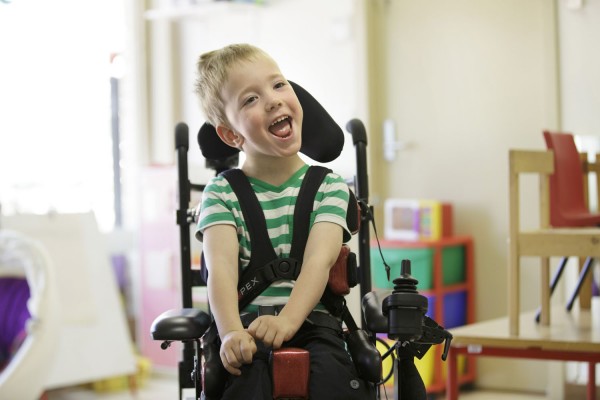
Toddlers/Children
Although the brain of toddlers/children with cerebral palsy remains injured, the injury does not get worse as they develop.
Depending on the level of severity of cerebral palsy, toddlers and children may experience difficulties with physical development such as:
#not walking by 12-18 months
#not speaking simple sentences by 24 months
If your child is not reaching these milestones or they display some of the signs of cerebral palsy, you may need to speak to your early childhood nurse, general practitioner or paediatrician.
Diagnosis of cerebral palsy
Based on patient history and physical examination
Lab studies, Blood test, Urine test, USG for brain, CT scan, MRI, EEG
EMG electromyography and nerve conduction studies
Tips for parents and family members
Learn about the condition. Being informed can help you understand how best to help your child. Local or national cerebral palsy organizations can help, especially in dealing with the impact of daily emotional and lifestyle issues.
Talk with your doctor or call your local hospital for suggestions.
For more information, see the Other Places to Get Help section of this topic.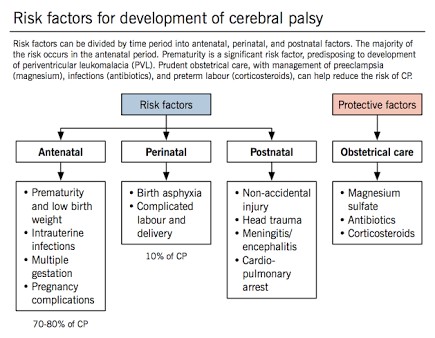
Learn about your child’s educational rights. Laws in the United States give children with special needs access to free public school services and some free treatments. These educational rights also include protection of the parents’ rights to be fully informed about or disagree with educational decisions concerning their child. Contact your state and local education departments for specific information about these accommodations. Also, vocational training may benefit some teens and young adults.
Work with teachers and school officials. Work with your child’s teachers, school administrators, special learning consultants, and school boards to develop the best educational plan for your child.
A cooperative team approach helps your child realize his or her potential.
Provide emotional support. The needs of a child with CP change over time. As children grow and become more aware of their physical limitations, they need to be able to talk about their feelings and how they are treated. It is sometimes easier for them to talk with someone who isn’t a family member.
Ask your doctor about whether emotional counseling would benefit your child. Also, include your child when making decisions about his or her health care.Take care of yourself. Get proper rest, eat well, exercise, and learn ways to cope with the challenges of raising a child with CP.
You will be better equipped to help your child when you have physical energy and emotional strength.Help each other. The entire family is affected when one member has CP. Helping family members cope with this situation is important, especially for siblings. You can help prevent other children from having unrealistic fears and concerns, feeling left out, or becoming overwhelmed.
You and your family and friends can help your child reach his or her highest potential. Focus on your child’s strengths. And build self-esteem by helping your child learn to do things by himself or herself.
Treatment of cerebral palsy
Treatment is based upon reducing the disability; various therapies are available like physical, occupational, speech etc
Hearing aids, spectacles
Neurosurgery has its own importance.
Treatment for other symptoms like medication for seizures
How homeopathy can help these children?
Homeopathy helps these children in many ways.
Firstly, it improves I.Q., which no other system can do. It improves neuromuscular abilities, so motor milestones start appearing faster. It improves in swallowing, neck handling, sitting, standing and walking. It improves in understanding of the child and calculating capacity, schooling capacity.
Secondly, it completely stops recurrent infections. So deterioration of the child stops and regains immunity to fight diseases.
Thirdly it improves cognitive ability of children also helps to improve associate psychiatric disorders such as anxiety, depression, conduct disorders and hyperkinesis.
It helps in improving flaccidity, spasticity of limb muscles, squint deglutition. (Hence food taking).
Who are the most suitable candidates for homeopathic treatment ?*
#The earlier the age, the better success. Results are the best between 1½ years to 5 years.
#The success rate in selected patients is above 90%.
#Between the patients of age group 5 – 10 years, the success rate is 50% – 60% and
above 10 years, the success rate is only 10% – 15 %.
#The severity of the damage: the most sever damage has success rate of 20% – 30% and mild damage has success rate of almost 95%.
#The criteria of severity are :
_I.Q. less than 40 are severe,
_I.Q. between 40 – 70 is moderate, and
_I.Q.-70 – 80 is mild.I.Q. less than 40 are severe, _I.Q. between 40 – 70 is moderate, and
_I.Q.-70 – 80 is mild.
#Damage of special sense is serious. Blindness, cataract, deafness are incurable.
#Absence of neck holding even at age of 4 – 5 years is poor indicator.
#Genetic diseases: Down Syndrome (Mongols), Rett Syndrome, Prader Willi Syndrome and others chromosome abnormalities improvement is slow if children is above 5 year of age.
#Child completely bedridden even at age of 3 years has poor chances
Fortunately, severely damaged children are statistically less. So, mostly children with mild and moderate damage are the best helped by homeopathy.
Homeopathy can help in majority of cases. The improvement in most cases starts within first two months of treatment. The maximum benefit can be derived within 12 – 14 months of treatment, in majority of cases. The basic idea of homeopathic treatment is to put the majority of children to the normal school. So for them ideally treatment should start from 2 to 2½ years of age. So that, at the age of 3 – 4 years child is fit for schooling. With homeopathy, we need no orthopedic corrections or operations. It does not need vigorous physiotherapy also.




